The History of Herringbone
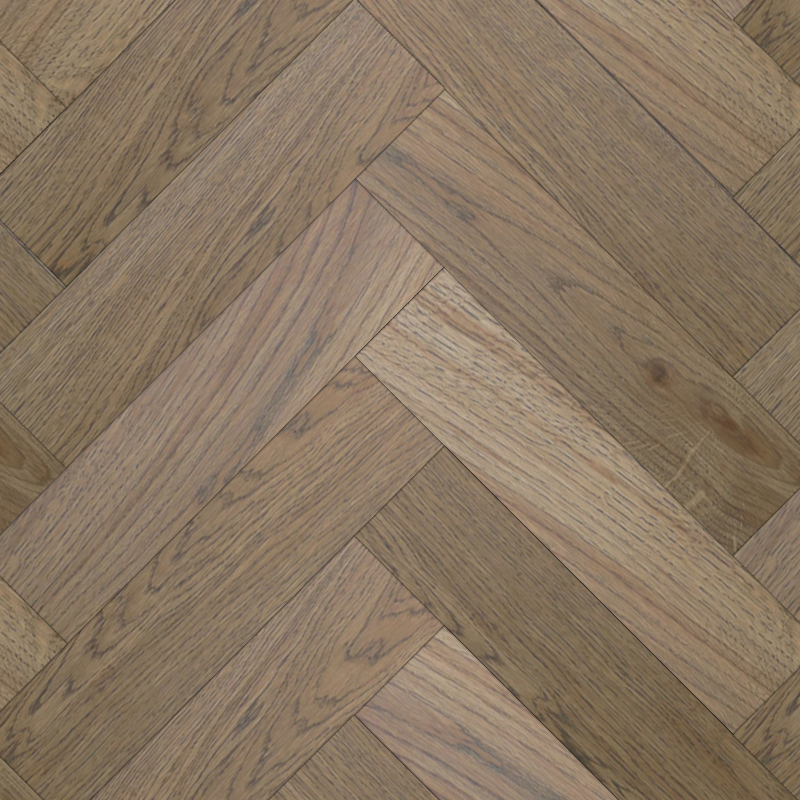
Origins: The HERRINGBONE Pattern
The traditional herringbone pattern has seen incredible popularity for centuries, and its distinctive aesthetic has become a very popular modern parquet option. So, what are the origins of the herringbone pattern? And how did herringbone wood flooring come to be such a celebrated design?

Why is it Called Herringbone?
Inspired by nature, the herringbone pattern gets its name from its likeness to the skeleton of a herring.

Paving the Way: Ancient Herringbone
The herringbone pattern’s rich history begins in masonry construction during the days of the Roman Empire. The Romans mostly used the pattern to create interlocking paving on top of a crushed stone base, which made for extremely durable pavements and roads.
Called ‘Opus spicatum’ or ‘Spiked Work’, some examples of this method can still be seen today – a testament to its resilience.
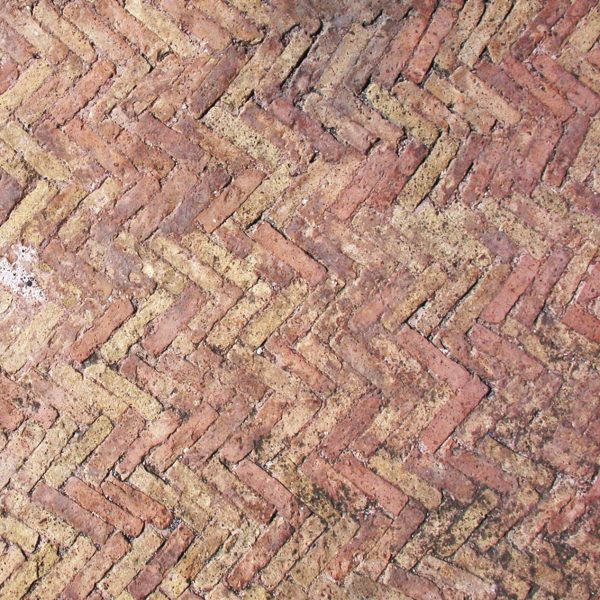
Herringbone paving at Trajan’s Market, Rome.
Fabric and Fashion
The earliest herringbone fabrics were found in ancient Italy, and the pattern became ubiquitous in Italian tailoring. And it was found in woven horsehair fabrics of ancient Ireland (around 600 B.C.), and was used in early tweed suits.
Admiring the distinctive geometric pattern, the ancient Egyptians also used the herringbone design in intricate jewellery worn by their society’s elite.
Herringbone became popular as a decorative textile pattern across the world, and remains an a fashion staple today.
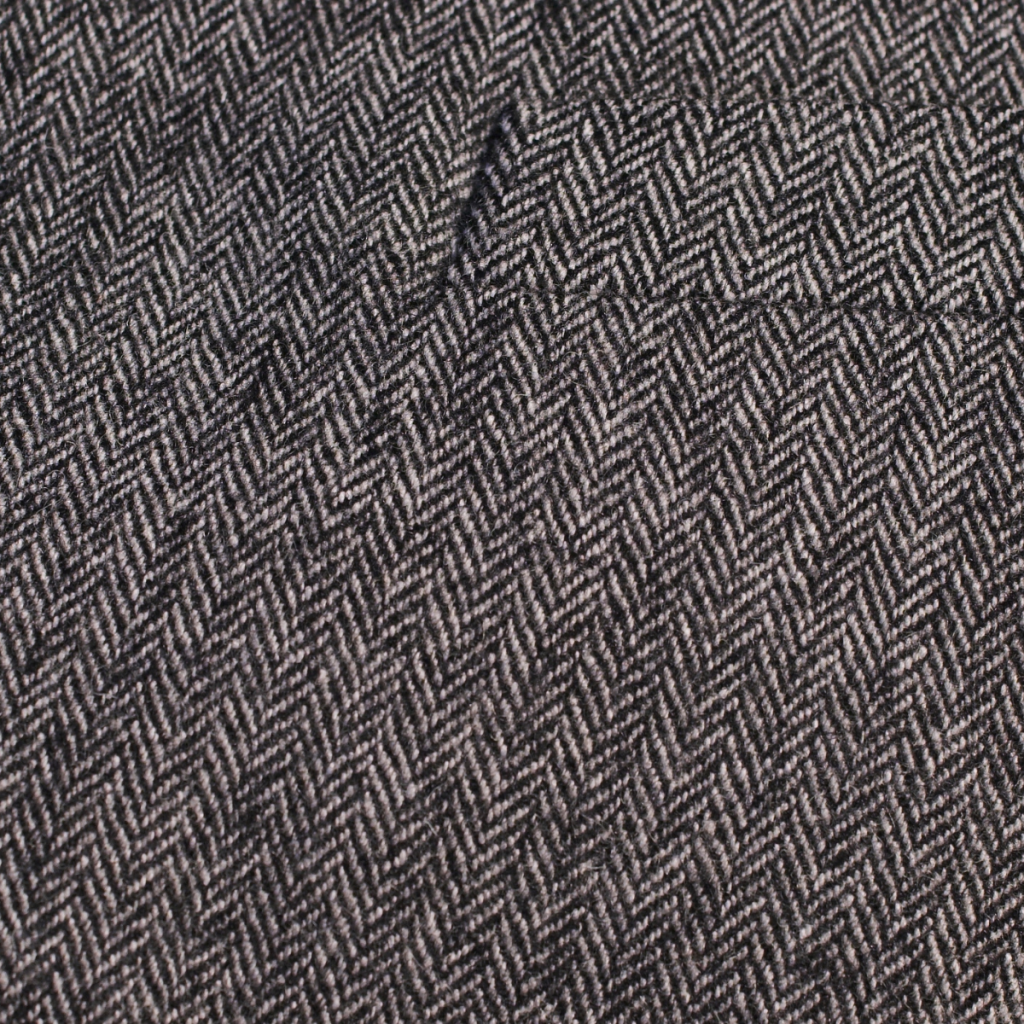
Medieval Herringbone
The herringbone pattern continued to be used in masonry construction during the Middle Ages, evidenced in medieval castle walls and fireplaces.
There are still some great examples at Norman castles in the UK (11th – 12th Century), such as Tamworth Castle in Staffordshire, and Usk Castle in Monmouthshire.
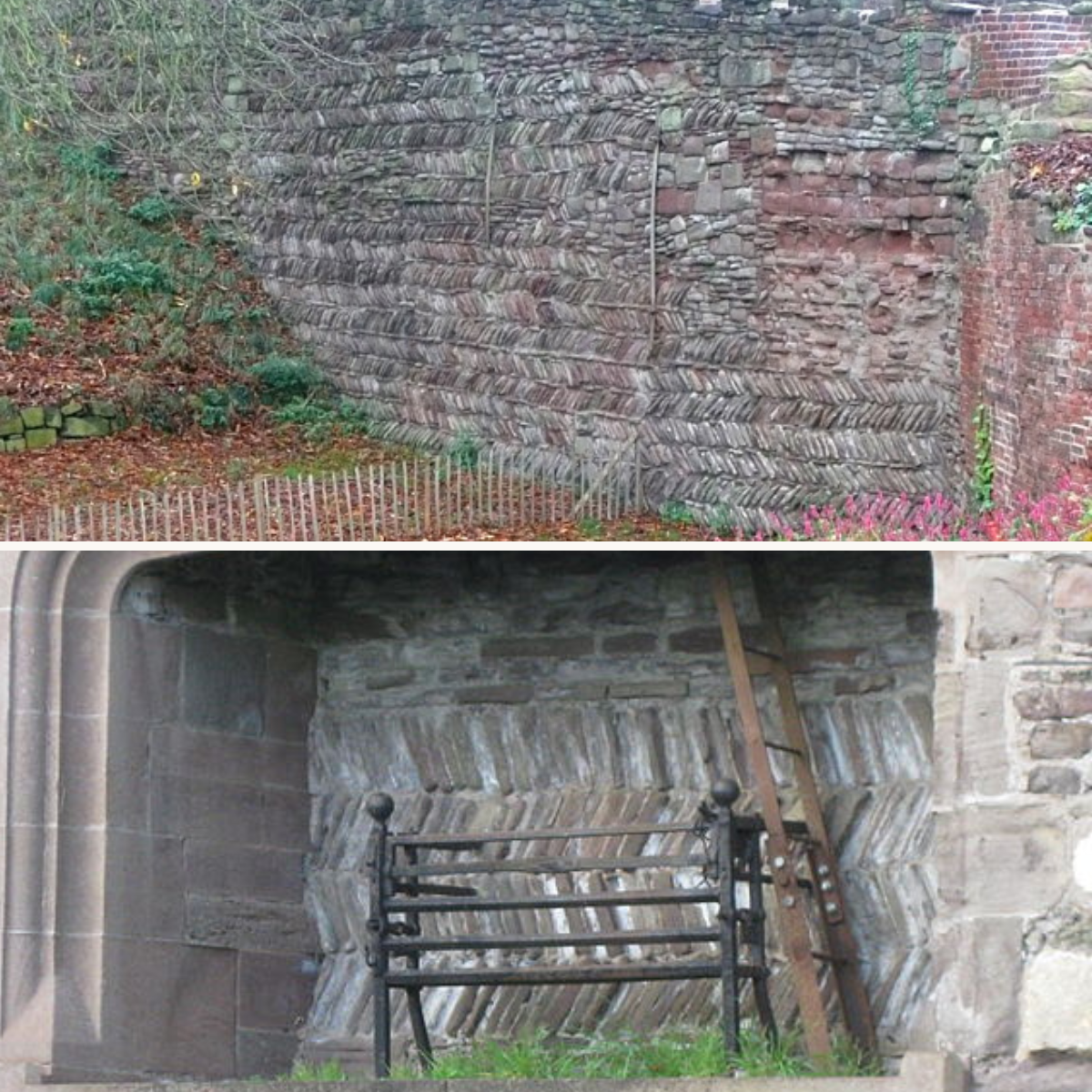
Herringbone style masonry in walls of Tamworth Castle (above) and in a fireplace at Usk Castle (below).
European Renaissance
Whilst it fell into obscurity after the collapse of the Roman Empire, the herringbone pattern had a resurgence following the completion of Florence Cathedral.
Its impressive dome is the largest masonry dome ever built, and is a great example of the herringbone brick-laying pattern. Designed by Filippo Brunelleschi, known as the father of Renaissance architecture, the dome was created using over 4 million bricks.
The European Renaissance (14th – 17th Century) saw the rediscovery of the herringbone pattern, notably in religious architecture.

Florence Cathedral (above) with herringbone brickwork inside its dome structure (below).
The First Herringbone Flooring
The herringbone pattern made its way into flooring design in the 16th Century. One of the first examples of wooden herringbone parquet can be found at the Chateau de Fontainebleau, installed in 1539.
Parquetry in France became popular with French nobility in the 1600s. Herringbone and other intricate parquet flooring patterns became popular with society’s elite circles. The design made a significant mark on the world of interior design, becoming synonymous with luxury and elegance.
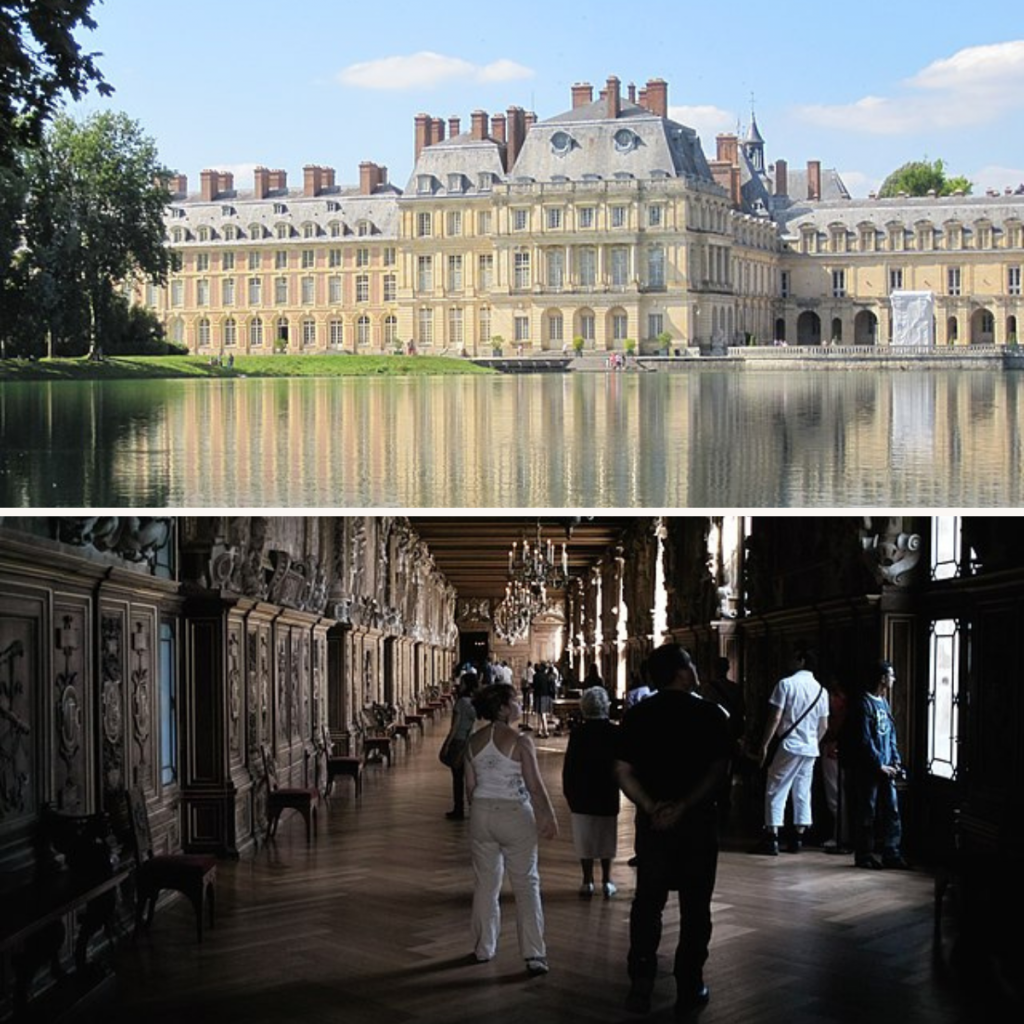
Herringbone wood flooring at Chateau de Fontainebleau, France.
Modern Herringbone Flooring
The timeless aesthetic of herringbone has made a remarkable, enduring impact on flooring design, becoming one of the most popular parquet flooring patterns.
With the ability to complement both traditional and contemporary interiors, it’s easy to see why herringbone flooring has remained a popular interior design choice.
Engineered Parquet
Today’s herringbone flooring has precisely milled tongue and groove joints and, thanks to the stability of engineered wood flooring, can be created with much larger dimensions to suit larger interior spaces. Plus, it’s stable enough to install onto underfloor heating systems.
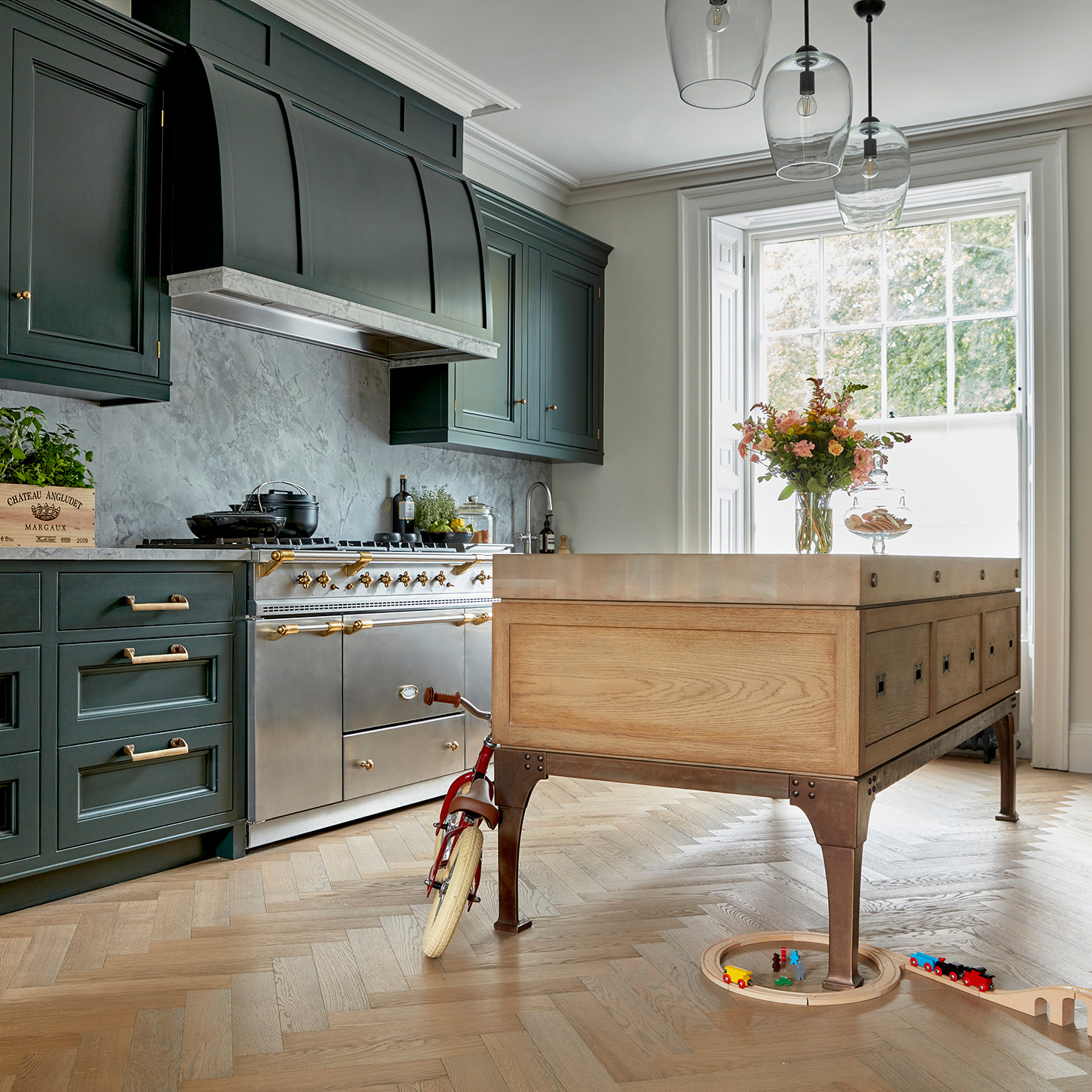
Credit: Artichoke
We offer solid and engineered herringbone in a wide range of specifications and finishes to suit any interior.
Explore Herringbone Flooring
We offer solid and engineered herringbone in a wide range of specifications and finishes to suit any interior.
